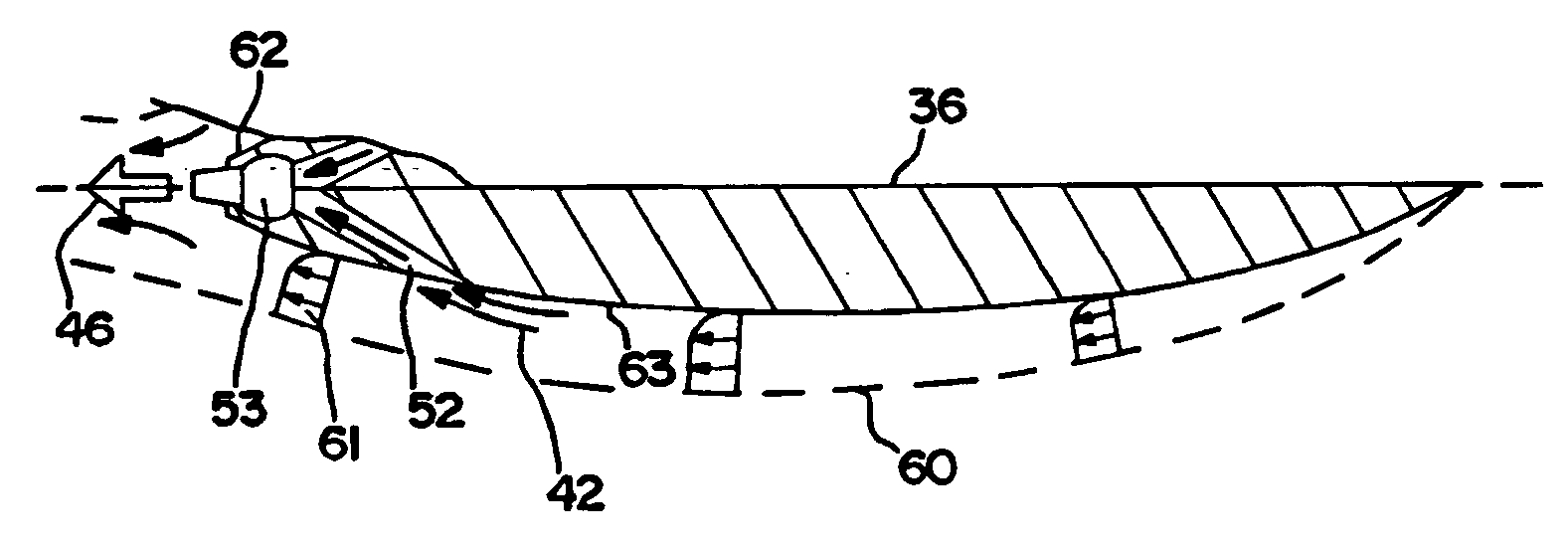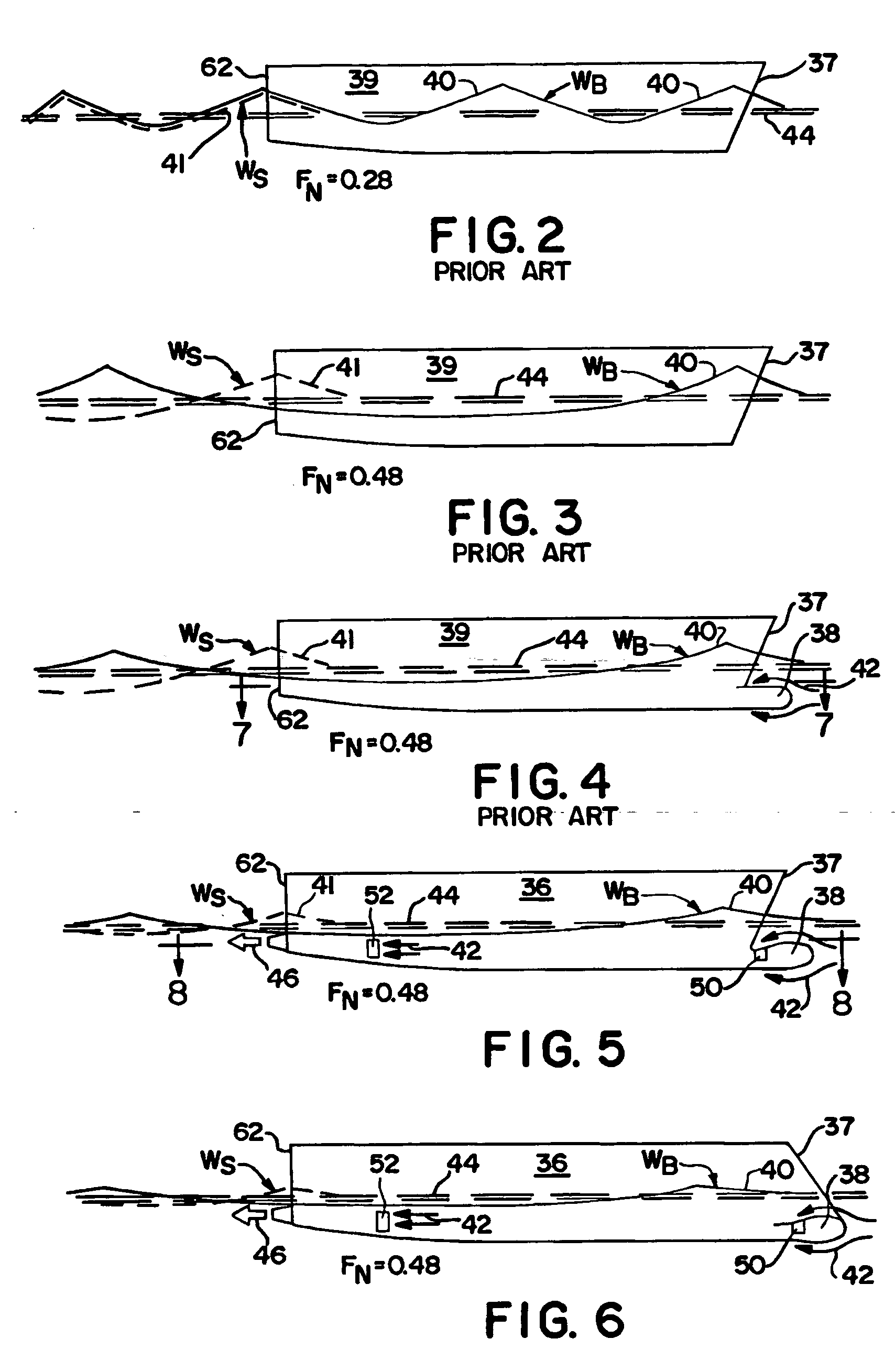Ship with wave energy engulfing propulsors
a propulsor and wave energy technology, applied in the field of ships with wave energy engulfing propulsors, can solve the problems of bulbous bows actually increasing drag, affecting the performance of ships, and increasing the power requirements of all practical purposes, so as to reduce the amplitude and hence the resistance of the ship's bow wave, improve the hydrodynamic force, and reduce the friction of the wetted area
- Summary
- Abstract
- Description
- Claims
- Application Information
AI Technical Summary
Benefits of technology
Problems solved by technology
Method used
Image
Examples
Embodiment Construction
[0057]FIG. 1 present a graph that shows the effects of the two primary resistance factors for prior art displacement hull ships. These primary resistance factors are friction and wave resistance. The graph presents them as Resistance per Ton of Displacement (R / Δ) vs. Froude Number (Fn) for some typical displacement ships. By standard Naval Architecture terminology, Fn=(0.3×Vk) / (LWL)ˆ½ where: Vk is ship velocity in knots and LWL is a ship's Length of WaterLine (LWL) in feet. Corresponding speeds for 400 foot (122 meter) LWL and 800 foot (244 meter) LWL ships are shown for illustrative purposes. The important thing to note here is that frictional resistance predominates at lower speeds while wave resistance predominates at higher speeds.
[0058]FIG. 2 presents typical wave patterns for a typical prior art ship 39. These are presented at a Fn of 0.28 which corresponds to speeds of about 18 knots for the 400 foot (122 meter) LWL ship and 28 knots for the 800 foot (244 meter) LWL ship. No...
PUM
 Login to View More
Login to View More Abstract
Description
Claims
Application Information
 Login to View More
Login to View More - R&D
- Intellectual Property
- Life Sciences
- Materials
- Tech Scout
- Unparalleled Data Quality
- Higher Quality Content
- 60% Fewer Hallucinations
Browse by: Latest US Patents, China's latest patents, Technical Efficacy Thesaurus, Application Domain, Technology Topic, Popular Technical Reports.
© 2025 PatSnap. All rights reserved.Legal|Privacy policy|Modern Slavery Act Transparency Statement|Sitemap|About US| Contact US: help@patsnap.com



